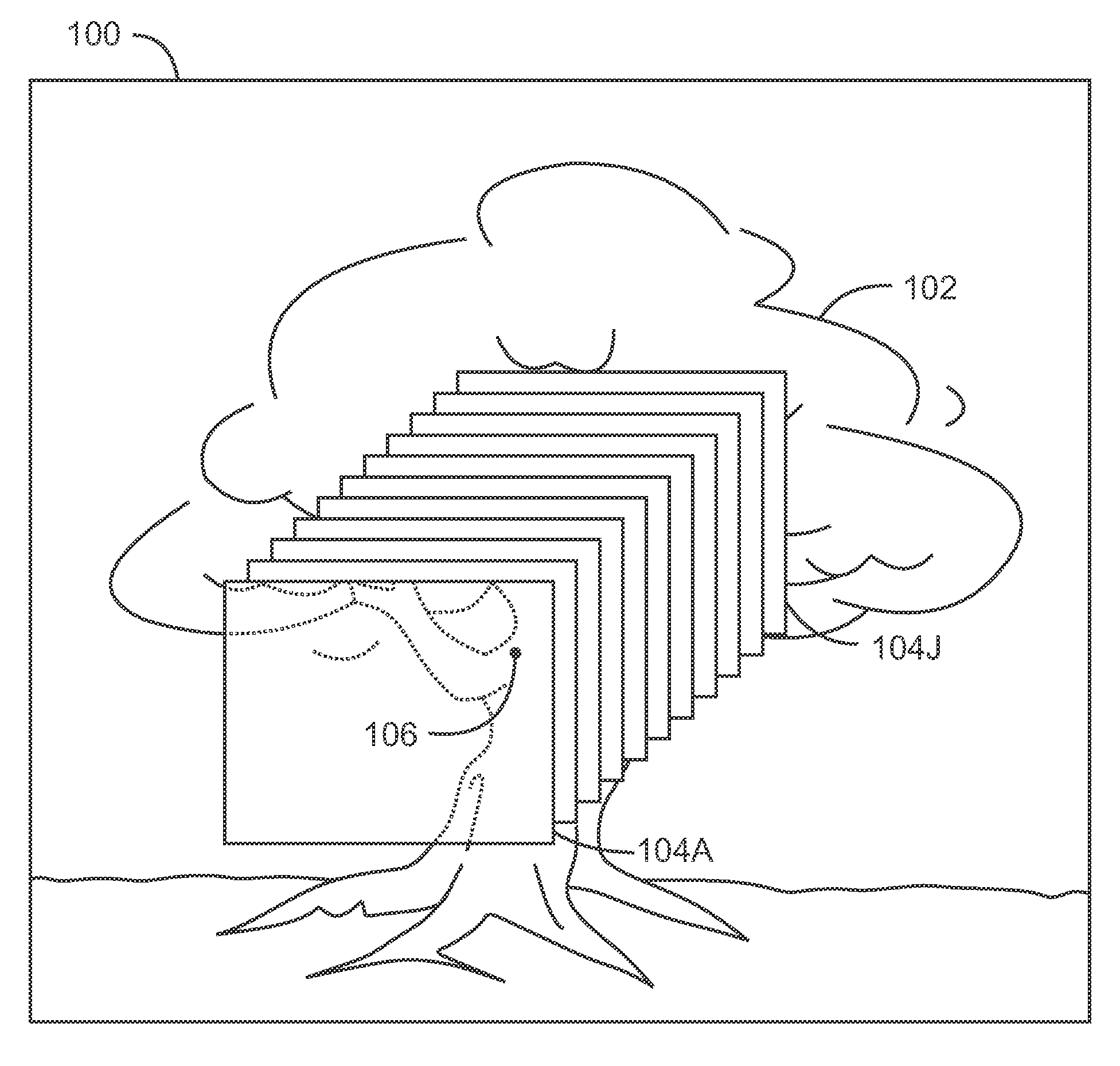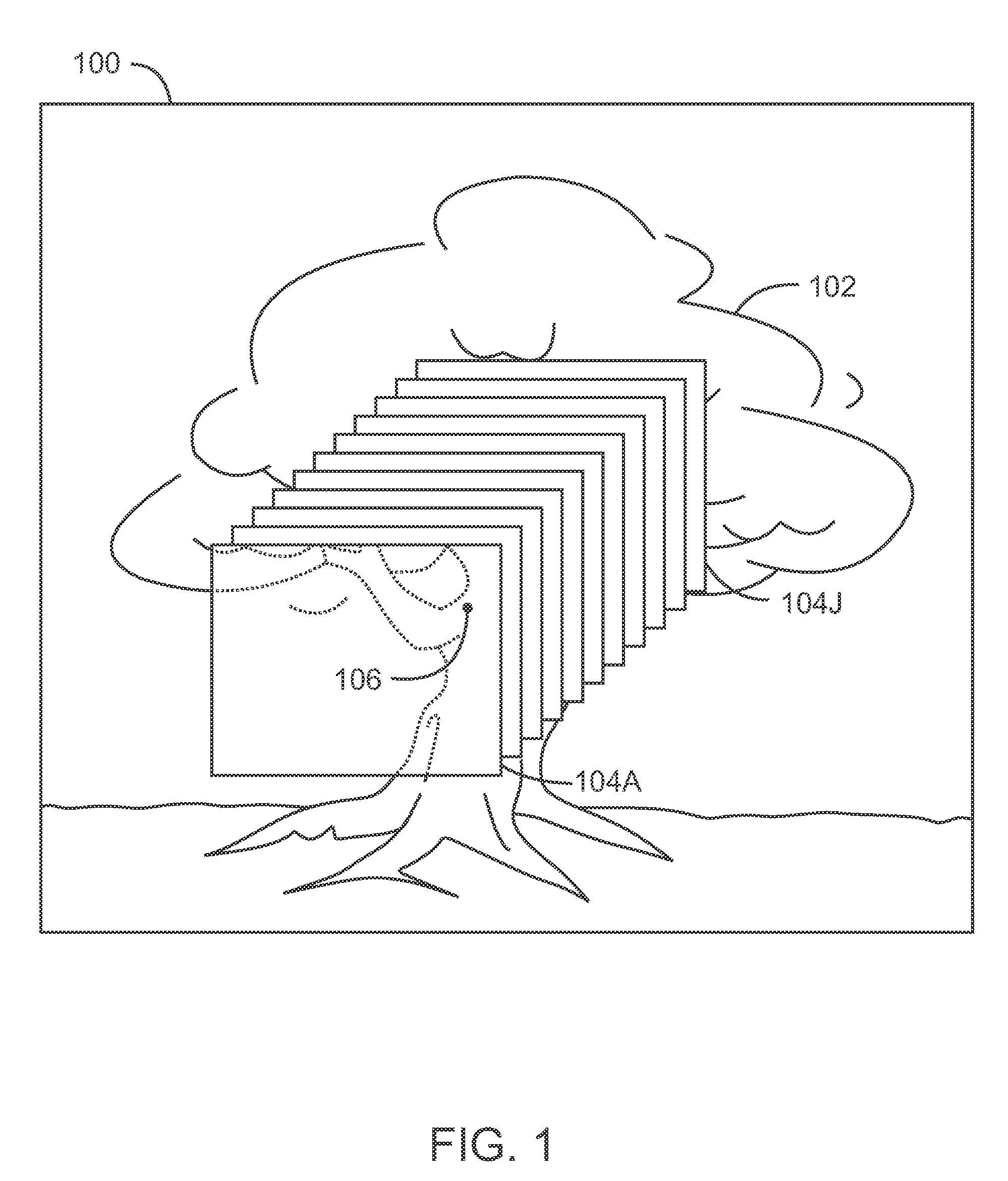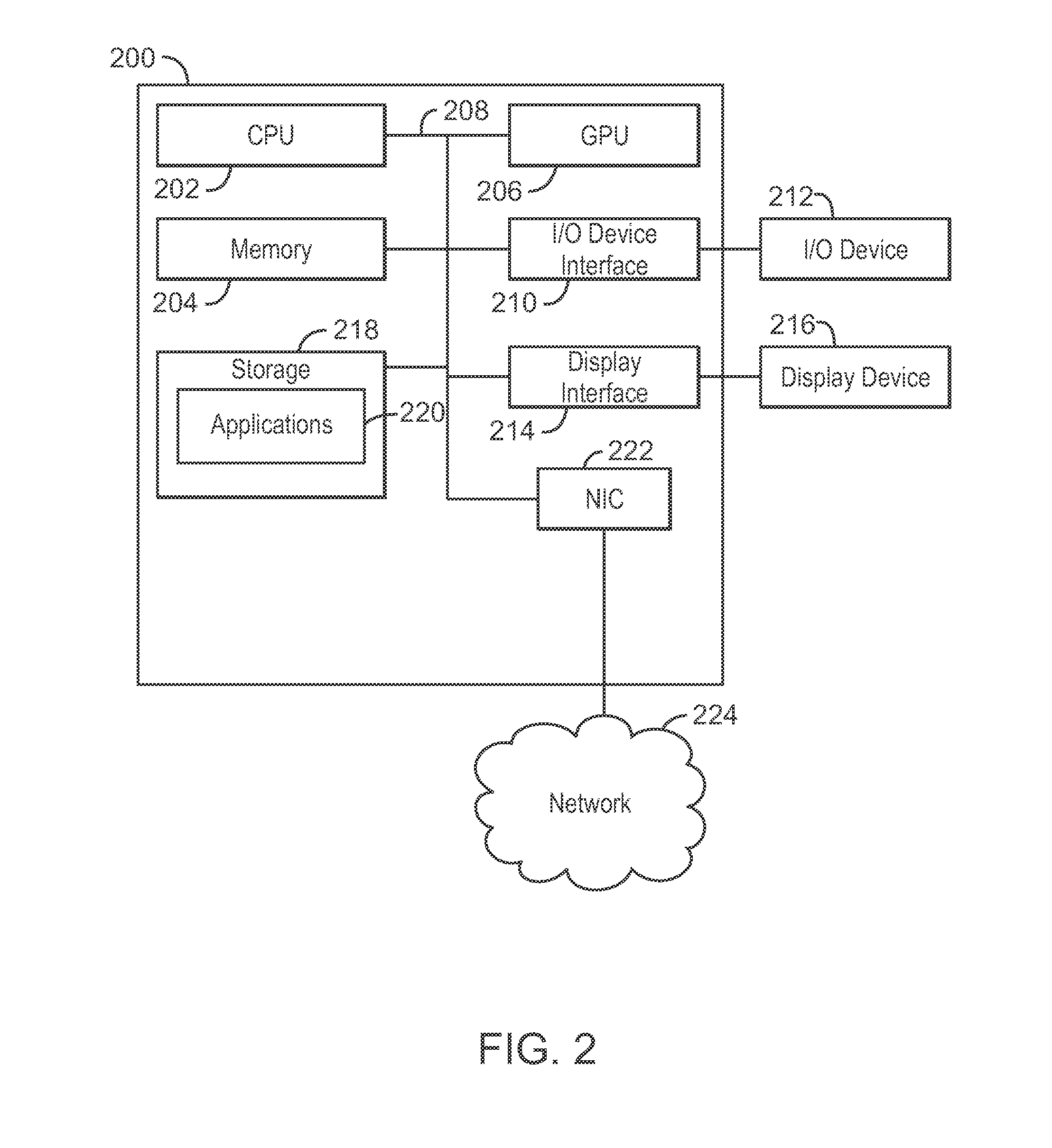Real-time order-independent transparent rendering
a transparent rendering and order technology, applied in the field of real-time order-dependent transparent rendering, can solve the problems of unbounded amount of memory, high cost, and high labor intensity of workers, and achieve the effects of reducing labor intensity, reducing labor intensity, and improving performan
- Summary
- Abstract
- Description
- Claims
- Application Information
AI Technical Summary
Benefits of technology
Problems solved by technology
Method used
Image
Examples
example 1
[0099]A method for rendering an image, the image comprising a plurality of pixels, is described herein. The method includes dedicating a fixed amount of memory to store a data structure for a pixel of the plurality of pixels. A visibility function may be built using data related to the pixel by performing a read-modify-write operation on locations of the data structure to alter the data at a plurality of nodes of the visibility function, wherein the plurality of nodes corresponds to a plurality of fragments for the pixel. Additionally, a partial color sum may be determined for each fragment of the plurality of fragments for the pixel using the read-modify-write operation. A final pixel color may be calculated using the visibility function and the partial color sum for each fragment of the plurality of fragments.
[0100]Determining the partial color sum may include multiplying a fragment color by a fragment transparency for each fragment of the plurality of fragments. Additionally, bui...
example 2
[0102]A computing device is described herein. The computing device includes a processing unit that is configured to execute stored instructions; and a storage device that stores instructions. The storage device includes processor executable code that, when executed by the processing unit, is configured to provide a memory budget to store a data structure relating to a pixel of a plurality of pixels that make up an image. A visibility function is computed using data related to a plurality of fragments for the pixel by performing a read-modify-write operation on the locations of the data structure to alter the data related to the plurality of fragments. A partial color sum is determined for each fragment of the plurality of fragments for the pixel of the image using the read-modify-write operation. A final pixel color may be computed using the visibility function and the partial color sum for each fragment of the plurality of fragments.
[0103]Determining the partial color sum may inclu...
example 3
[0105]At least one non-transitory machine readable medium having instructions stored therein is described herein. In response to being executed on a computing device, the instructions cause the computing device to dedicate a fixed amount of memory to store a data structure for a pixel of the plurality of pixels. A visibility function may be built using data related to the pixel by performing a read-modify-write operation on locations of the data structure to alter the data at a plurality of nodes of the visibility function, wherein the plurality of nodes corresponds to a plurality of fragments for the pixel. A partial color sum may be determined for each fragment of the plurality of fragments for the pixel using the read-modify-write operation. A final pixel color may be calculated using the visibility function and the partial color sum for each fragment of the plurality of fragments.
[0106]Determining the partial color sum may include multiplying a fragment color by a fragment trans...
PUM
 Login to View More
Login to View More Abstract
Description
Claims
Application Information
 Login to View More
Login to View More - R&D
- Intellectual Property
- Life Sciences
- Materials
- Tech Scout
- Unparalleled Data Quality
- Higher Quality Content
- 60% Fewer Hallucinations
Browse by: Latest US Patents, China's latest patents, Technical Efficacy Thesaurus, Application Domain, Technology Topic, Popular Technical Reports.
© 2025 PatSnap. All rights reserved.Legal|Privacy policy|Modern Slavery Act Transparency Statement|Sitemap|About US| Contact US: help@patsnap.com



